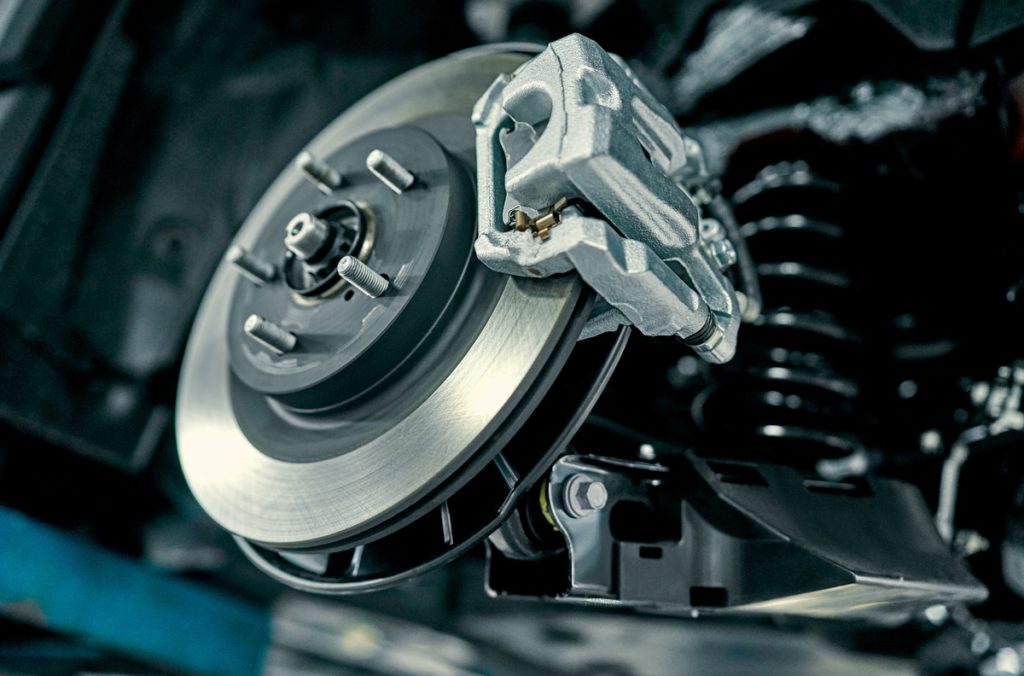ABS brakes have been around for over four decades, believe it or not, but many of us still don’t really understand what they are or how they work.
They were first introduced by Mercedes-Benz in 1978 as a new safety feature in automotive technology. Initially, ABS brakes were an optional feature, but they are now standard safety equipment on all modern vehicles.
What is an anti-lock braking system (ABS)?
An anti-lock braking system (ABS) is a safety feature of all modern vehicles, designed to help you have greater control when driving and braking.
It is a system that is designed to stop your vehicle’s wheels from locking when you brake. On older cars without ABS brakes, braking suddenly would cause the wheels to lock up. When braking suddenly, the tyres would stop spinning while the car was still moving forward, essentially skidding on the road with no traction.
An ABS braking system is made up of speed sensors, valves, a pump and a controller (computer) in the car. The system controls the braking pressure as the wheel rotates, stopping it from locking or skidding.
How do ABS brakes work?
The explanation that Mercedes-Benz used on its brochures over 40 years ago is still pretty accurate:
“The anti-lock braking system uses a computer to monitor the change in rotational speed of each wheel during braking. If the speed slows too quickly (such as when braking on a slippery surface) and the wheel risks locking, the computer automatically reduces the brake pressure. The wheel accelerates again and the brake pressure is increased again, thereby braking the wheel. This process is repeated several times in a matter of seconds.”
So if you brake suddenly, ABS will kick in and prevent your wheels from locking – which in turn prevents the vehicle from skidding. ABS brakes help your tyres grip the road and stop rather than continuing forward, sliding on the pavement.
Why do ABS brakes vibrate?
When your ABS brakes engage, you may feel some pulsing or vibration on your foot on the brake pedal. When ABS brakes were first introduced, this was much more noticeable than it is now on newer vehicles. But you still may feel some pulsing in the brake pedal.
This is happening because as you hit the brakes and the ABS system begins to operate, there are valves that open and close quickly. Through these cycles of opening and closing, the valves release pressure from the master cylinder, which is what you may feel through that pulsing sensation. It’s completely normal and nothing to worry about. If there is excessive juddering, or you can feel vibration through the steering wheel, there may be a bigger issue that needs investigating.
Why does ABS come on when braking normally?
If your ABS brakes come on when you’re braking normally (i.e. not braking suddenly), there is likely a problem with how they’re functioning. The most common issue is a problem with the sensors. A weak signal from the sensors may be interpreted as a locked wheel.
ABS braking system warning light
When ABS brakes were first introduced, many vehicles had a light that went on when the ABS system was in operation. Nowadays, ABS brakes are a standard feature on modern cars, so there usually isn’t a light that tells you when they’ve come on.
Instead, the light may mean that there is an issue or a fault with your ABS system. It’s important to know what the light means. If the ABS light is a warning light that the anti-lock brake system needs maintenance, your car may not stop as efficiently as needed, causing a safety issue.
Check your manufacturer’s vehicle manual to check if your ABS system has a light that notifies you when the ABS brakes have come on or not. If any of the lights on your dashboard are illuminated, don’t ignore them. Refer to your car’s manual or contact us for some assistance.
How do you reset ABS and brake lights?
You can reset the ABS and brake light by disconnecting the car battery’s positive cable. Next, keep your foot on the brake pedal and hold it there until the car’s electrical system shuts off.
Once the electrics drain out, you can replace the ABS sensor.
What happens when ABS brakes are on ice?
ABS brakes are designed to stop your wheels from locking up, even in wet, snowy or icy conditions.
Before ABS brakes were commonly used, drivers were told to “pump” their brakes when stopping in slippery or icy conditions. Now, with ABS, your car’s computer and ABS system can do that pumping action faster than a human.
Generally speaking, you can use your ABS system on ice as you would on other road surfaces. There is no need to pump the brakes.
As always, we suggest consulting your manufacturer’s manual – and we always recommend driving to the conditions. This means reducing speed and ensuring you have full visibility before driving in wet, snowy or icy conditions.
If you have any questions or concerns about your ABS braking system, get in touch with the experts at Mt Roskill Collision Centre. We’re always happy to help you stay safe on the roads.
Call us on 0800 227 762 or email [email protected] for professional and friendly car servicing advice.
